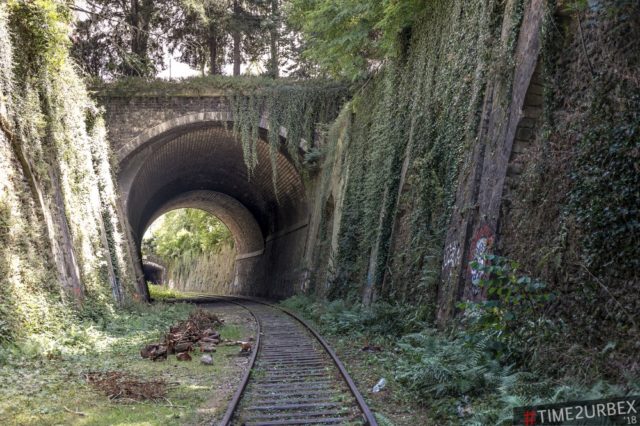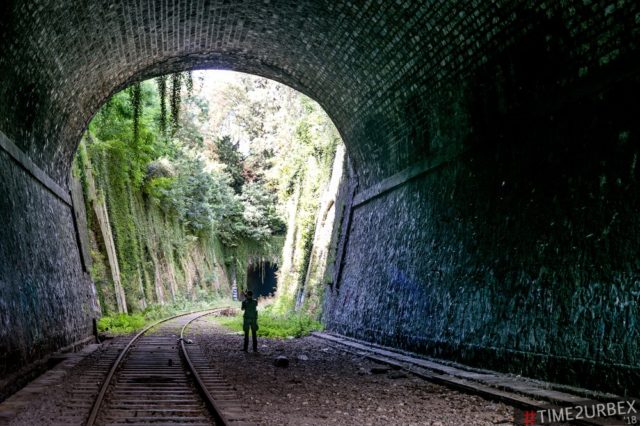La Petite Ceinture (which means “little belt”) is a 20-mile stretch of railway that runs through the heart of Paris. Long disused, it now faces an uncertain future as the value of vacant land in the city center is at a premium.
In the middle of the 19th century, Paris had five major railway stations, each run by a different rail company. These were all located just within the city’s defensive walls.
The rail barons were worried that connecting up the individual railway stations would result in a personal loss of profit, so rail users were forced to walk between the five stations if they wanted connecting trains.

However, the military saw a huge benefit in having a railway running around the walls that would allow them to move troops, machinery, and ammunition. Initially, they put forward three projects but the government only approved the project which connected the railway stations.
The government expected the rail barons themselves to finance and build the interconnecting railway. As expected, this didn’t go down well and little movement was made on the project.
But Napoleon had grander ideas and following his coup in December 1851, he drew up an agreement that required each of the rail companies to provide one million francs each and the government would build the new railway.
There was steady progress over the next few years. The first part of the Ceinture railway line was completed in December 1852, the second part in 1853, and the final part was fully functional in 1854, having been somewhat delayed by landslides in the area.
Initially, only the main rail companies used the Ceinture line for freight, but from September 1855, the opportunity to use it was opened up to local merchants as well. The service ran only during the day until 1857 after which it ran at night as well.
The state and the rail companies clashed over the use of the line. The companies were satisfied just using the Ceinture railway for freight but were forced to open five passenger stations in 1862 after pressure from the government.
The passenger line proved so popular that extra trains were added on holidays and reduced prices were offered on “worker trains” from 1866 to help those who traveled to work by train. In 1867, the line was extended to serve the slaughterhouse district.
Eventually, people could travel in a full circle around Paris although they’d have to change trains.

The impetus behind the Ceinture line’s construction had been defense, and the railway was put to that use in 1870 when the state requisitioned it for the Prussian War and the siege of Paris. Some stations were damaged during the Prussian bombardment, but after the war, the train service slowly got back to normal.
The passenger service became so popular that trains which had been running every hour or half-hour moved to run every 15 minutes.
However, with so many passengers trains, the freight service was beginning to suffer. Consequently, it was decided that all passenger services would run on the inner ring of the Ceinture while freight was kept to the outer ring.
Le Petit Ceinture became a popular way to travel with five million passengers a year in 1880, rising to 13 million just three years later. However, passenger numbers declined with the opening of the Paris Métro at the beginning of the twentieth century.
There was a slight increase in passenger numbers in 1910 when the Métro was inoperational due to flooding, but that didn’t last long. Eventually, Le Petite Ceinture stopped all passenger services in April 1934.

The railway line got through WWII virtually unscathed although it was the site of many skirmishes. There were suggestions in 1995 that it could be reopened as part of a project to create a circular tram system around Paris, but that never came to pass.
Instead, Le Petite Ceinture became a green space within Paris that drew many urban explorers, photographers, and graffiti artists. It is estimated that 200 species of plants can be found here and that the disused railway is also home to 70 animal species.

In 2007, plans were put in place to reopen part of the railway line to the public as an urban park. Currently, three sections are open to the public and it’s hoped that more will follow.
Many local groups are working to see Le Petit Ceinture continue as a green space. Jardins du Ruisseau was formed in 1998 by residents living near the 18th arrondissement. They cleaned up the area, planted flowers and vegetables, and made it into a community space.
The Jardins association now has 450 members. There are beehives, allotments, and even schoolchildren help in its upkeep.

Another popular spot is La Recyclerie bar which is located inside the Ornano station. They don’t buy furnishings but utilize anything they can find, leading to a “bric-a-brac” style that appeals to customers. They also have a mini urban goat and chicken farm on the platform itself.
The association CASP has used six old sleeper train carriages to make a homeless shelter. The director of the shelter, Rachid Ferchouli, has been quoted as saying that the shelter isn’t as “alienating” as other shelters because “you’re still half on the street and half inside.”
Despite all these remarkable projects, the current owner of the line RFF (the French Railway Network) is starting to sell off sections of the track for redevelopment, making the future of this forgotten railway turned beauty spot very uncertain.
All the photographs of the abandoned railway are provided by Sam Namos who took them in 2018. A big thank you to him for allowing us to share these photos! He loves visiting abandoned places and shares his amazing photos with his viewers on his Instagram page. Check it out via this link.









The Amazing Abandoned Space Shuttles in 57 Images

